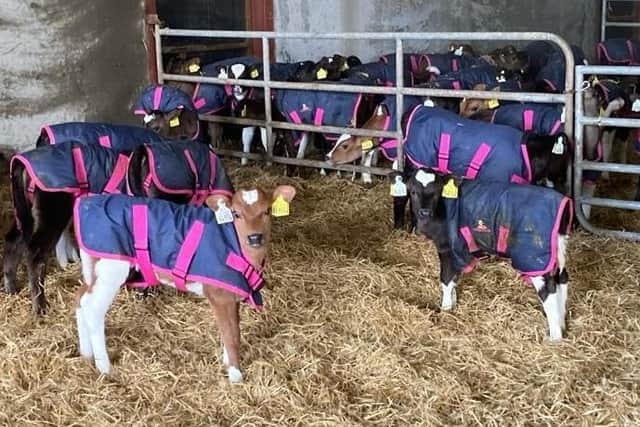Taking the pain out of disbudding calves
and live on Freeview channel 276
Legislation permits the disbudding of calves by chemical cauterisation up to seven days of age. When any other method is used, such as thermal cauterisation, farmers are required to use a local anaesthetic.
“Many farmers are used to disbudding young calves throughout the year, but it’s essential to use the correct technique when administering pain relief,” advises Kevin Corry, NI Technical Sales Manager at Norbrook.
Advertisement
Advertisement
“It’s an important part of many farm assurance schemes, like Red Tractor and RSPCA Assured, so it’s good to get it right.”


Local anaesthetic containing procaine (Adrenacaine) should be administered under the skin, halfway between the outer corner of the eye and the base of the horn bud.
Feel for a bony ridge in this area; the cornual nerve runs under that ridge. By injecting 2mls (into this area, on both the left and right side, 10-20 minutes before disbudding, the tissue around the horn bud will be completely anaesthetised or numbed. Use an 18-gauge one inch needle and an injector gun if disbudding batches of calves.
“Adrenacaine will numb the area for about an hour or an hour and a half, but as it starts to wear off it can be pretty painful,” Kevin continues. “Continued pain after the procedure can prevent calves from eating and drinking as normal and, in turn, that can affect recovery and their ongoing development. It is best practice is to use a longer-acting non-steroidal anti-inflammatory as well as the shorter-acting local anaesthetic.”
Advertisement
Advertisement
A meloxicam-based non-steroidal (Loxicom LA) is recommended in calves for the relief of post-operative pain following disbudding, as it provides longer-lasting pain relief given that the local anaesthetic starts to wear off after 60-90 minutes.


A single injection (1.25ml for a 50kg calf) should be given at the same time as the local anaesthetic to ensure continued pain relief during the procedure and the recovery period.
“The concept of pain is hard to evaluate, especially when the patient can’t explain it in words.
“But we have studies that show when calves were treated with meloxicam as well as local anaesthetic, they showed a reduction in sensitivity to the wound area for up to four hours after administration.
Advertisement
Advertisement
“There were also improvements to their physiological and behavioural responses to pain.
“I think the important thing to remember is that when calves are very young, the slightest thing can set them back, so anything we can do to help that makes a difference.”
After disbudding wound spray can be administered and calves should be monitored for the next 24 hours to ensure there is no bleeding or developing infection. Speak to your vet if you have any concerns.